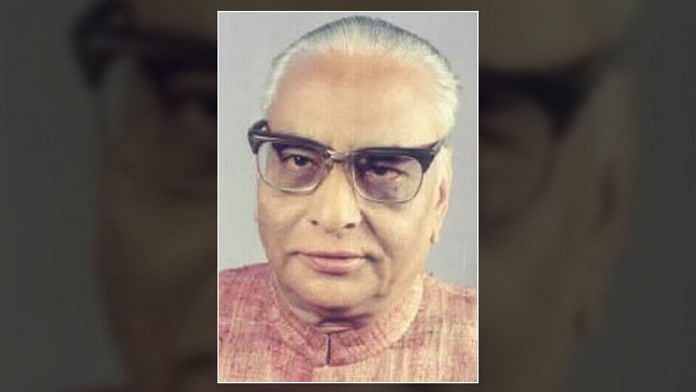New Delhi: For a brief two-year period in the early 1990s, when Sharad Pawar moved to the union government as defence minister in P.V. Narasimha Rao’s cabinet, Sudhakarrao Naik served as Maharashtra chief minister.
In that short tenure, Naik saw riots take place in Bombay (now Mumbai) following the demolition of the Babri Masjid in Ayodhya. His administration remained a mere spectator as Bal Thackeray-led Shiv Sena mobs ravaged Muslim neighbourhoods in India’s commercial capital, killing over 900 people.
On his 18th death anniversary, ThePrint takes a look back at the life and times of the former Congress leader.
Also read: Morarji Desai, the prime minister for whom time in PMO was ‘tougher than prison’
Early career
Sudhakarrao Rajusing Naik was born in Gahuli village in the Yavatmal region of Maharashtra in a Banjara tribal family on 21 August 1934. He was the nephew of former Maharashtra chief minister Vasantrao Naik.
Naik completed his education from Vidarbha Mahavidyalaya in Amravati, Maharashtra. In 1962, he started his political career as chairman of the Panchayat Samiti in Pusad.
In 1976, he was elected to the Maharashtra Legislative Council on a Congress ticket. Two years later, he became an MLA and served the Pusad constituency for the next 17 years.
In that period, he also served in several ministries in the Maharashtra cabinet, starting with the housing, animal husbandry and fisheries departments in 1978. He served as minister for industries, revenue and social welfare in 1985-86, the minister for social welfare, energy and legislative affairs between 1988 and 1990, and the minister for revenue and parliamentary affairs in 1990-91.
He also edited two Marathi weeklies, Gram Swarajya and Sonali.
Bombay riots
Sharad Pawar, then a Congress leader, was chief minister of Maharashtra until June 1991, but then became defence minister in Narasimha Rao’s central government. The trusted Naik became his successor.
Naik served as the Maharashtra CM between 25 June 1991 and 22 February 1993. However, during his tenure, India’s commercial capital was shaken by the 1992-93 riots.
Over 900 people died due to violence which was spread over two long phases — a week in December 1992 and 10 days in January 1993.
In 1998, the Justice B.N. Srikrishna report said it was Shiv Sena chief Bal Thackeray who directed the violence against Muslims. The report added that Naik’s government provided “effete political leadership” as it failed to stop Shiv Sena-led mobs from rampaging through Muslim-dominated areas.
Also read: Jagjivan Ram, Dalit champion with world record as parliamentarian who almost became PM
Crackdown on underworld
During his term as CM, Naik cracked down on mafia dons who were related to Dawood Ibrahim, Mumbai’s most notorious gangster.
Naik expelled Pappu Kalani from the Congress and ordered an investigation against him over terrorist activities. Kalani, a Congress MLA from Ulhasnagar who was affiliated to Ibrahim, was put behind bars in 1992 under the dreaded Terrorist and Disruptive Activities (Prevention) Act, commonly known as TADA.
Another gangster, Jayendra Thakur, brother of MLA Hitendra Thakur alias Bhai Thakur, was also sent to jail under TADA by Naik’s government.
Conservation efforts
Naik is credited for establishing an independent water conversation department in the Maharashtra government to strengthen the horticulture programme in rain-fed and dry areas.
In 2016, Bharatiya Janata Party leader Nitin Gadkari praised Naik for the efforts he took to ensure water conversation. “I always held Sudhakarrao Naik in high regard for his work on water conservation,” Gadkari said.
Tussle with Pawar
In 1993, Naik resigned from the post of chief minister due to his political differences with Pawar and his inability to handle the Bombay riots.
Naik also made a statement during his tenure that Pawar had asked him to “go easy on Pappu Kalani”.
Eventually, Pawar returned to Maharashtra as CM for the third time.
Later career
Naik also served as the governor of Himachal Pradesh from July 1994 to September 1995. Three years later, Naik was elected as an MP from Washim.
However, he resigned from Congress in 1999 and joined Pawar’s newly-founded Nationalist Congress Party. The same year, he was again elected MLA from Pusad.
On 10 May 2001, Naik died in Mumbai following a heart attack at 67.
Also read: Ram Manohar Lohia, the socialist who wanted compulsory intercaste marriage for govt servants






